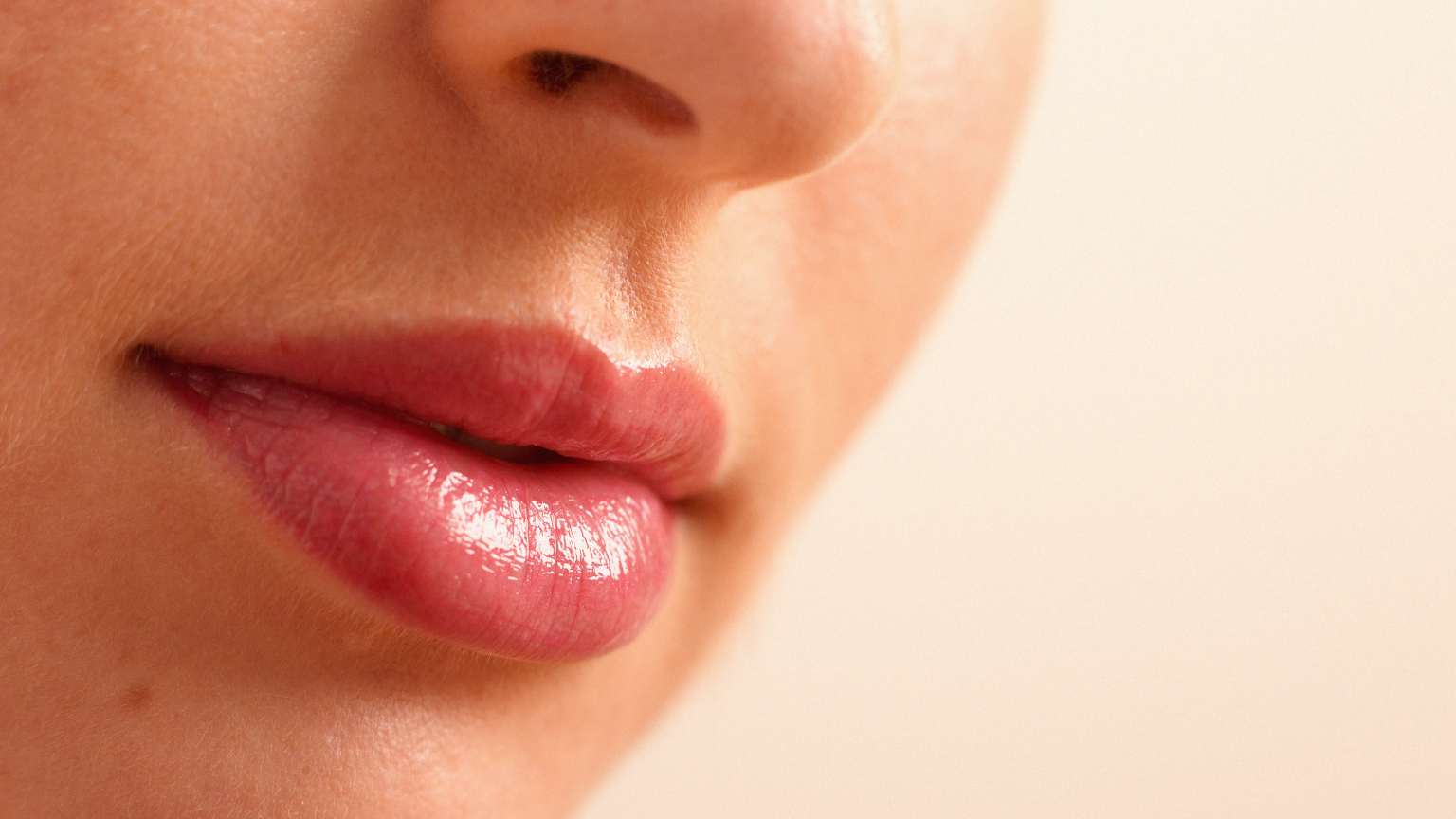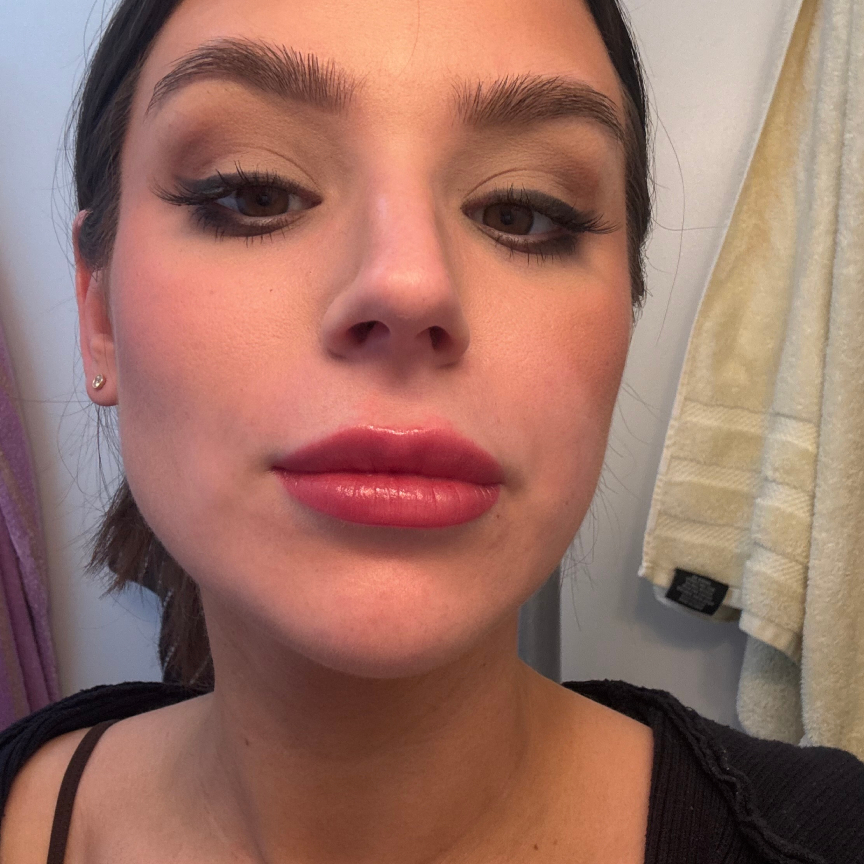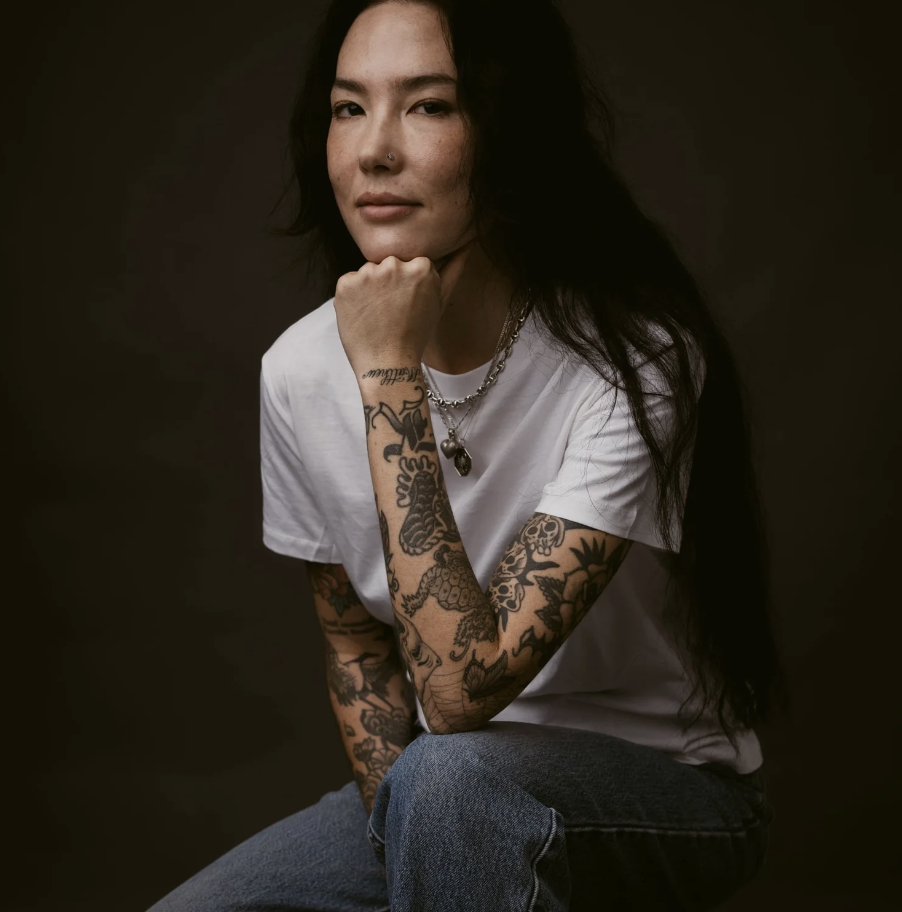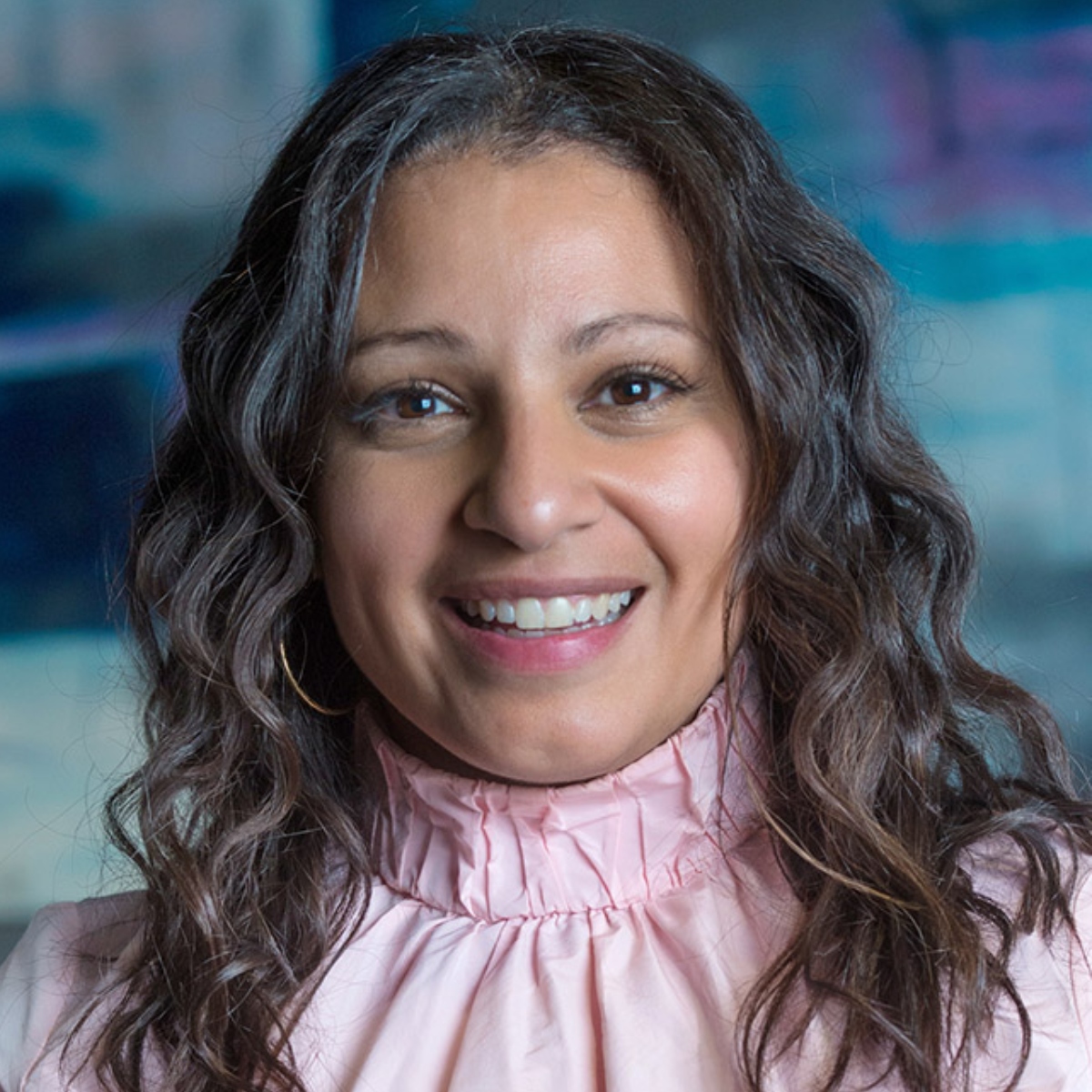Since I Tried Lip Blushing, I've Tossed Every Lip Liner and Lipstick I Own
Here's everything you need to know about tattooing your lips.


I've spent years chasing the perfect lip color and shape—through everything from aesthetic treatments like filler to lip products like balms, liners, and tints. They all promised to mimic a natural look, but never quite did. I couldn't shake the feeling that the tone of my lips was slightly uneven and had faded over the years, almost as if the saturation had been turned down. Then my 56-year-old mom got her lips blushed, a fancy way of saying she got her lips tattooed. When I saw how soft, defined, and naturally rosy they looked—like 10 years had been taken off—I was hooked.
Lip blushing, I learned, is essentially a semi-permanent tattoo that deposits pigment into the lips for a soft tint and a more defined shape. It's not about creating a "filled-in-lipstick" effect, but more so about restoring that healthy flush most of us lose over time thanks to sun exposure, exfoliation habits, and, well, life. It can also be a game-changer for those who don't want filler and want to naturally and slightly define their lip borders.
After hearing New York-based permanent makeup artist Saki Lee's name pop up again and again in beauty circles (she's known for her feather-light technique and perfect undertone matching), I finally booked an appointment. What followed was equal parts exciting and nerve-wracking: numbing creams, color swatches, and the experience of a tattoo gun on one of the most delicate places on my face.
Ahead, I'm breaking down everything I learned—from what to expect before, during, and after your appointment to how to care for freshly blushed lips—for the ultimate guide to lip blushing.
What Is Lip Blushing?
Have you ever wished you could wake up with your favorite tinted balm and lip liner already applied? That's the lip blushing effect. It's a form of cosmetic tattooing that uses a small, mechanized needle—similar to a tattoo machine, but gentler and more precise—to deposit pigment into the lips.
According to Lee, the treatment involves outlining and shading the lips in light passes—using a tattoo machine with fine needles—to layer pigment into the skin. The process builds color gradually, resulting in a soft wash of color and subtle definition, not a painted-on lipstick look. Think of it as your natural lips on their best day, enhanced.
A post shared by SAKI LEE (@sakileenyc)
A photo posted by on
Am I a Good Candidate for Lip Blushing?
While lip blushing can be customized for just about anyone, it isn't a one-size-fits-all treatment. The best candidates are people looking to subtly enhance their natural lip tone or definition, not dramatically change shape or color. Those who deal with naturally pale, uneven tones, or faded lips often see the most noticeable difference.
Get exclusive access to fashion and beauty trends, hot-off-the-press celebrity news, and more.
Lee explains that the color selection always starts with your unique undertones. "Color choice is usually a collaborative process between me and the client," she says. "Visual references give me a lot of insight into their goals—whether they're leaning more natural, more makeup-inspired, or something in between." For clients with previous tattoos or darker pigmentation, a cosmetic artist may sometimes perform corrections or neutralizations first to balance tone before layering new color.
Still, there are a few situations where you may want to hold off. Board-certified dermatologist Mona Gohara, MD,, cautions that anyone prone to allergic reactions should ask about pigment patch testing first, and those with active cold sores or skin irritation should wait until the area is fully healed and notify the artist.
In short, if your lips are healthy and your expectations are realistic, you're probably a great candidate.
Is Lip Blushing Safe?
Like any cosmetic procedure or tattoo, lip blushing comes with its share of risks. "If you wouldn't get a tattoo in someone's kitchen, don't get lip blushing in a space that feels more 'spa day' than 'sterile procedure,'" says Dr. Gohara.
She emphasizes that safety depends entirely on the artist's skill, training, and hygiene standards. "It's essentially a tattoo for your lips, which can mean infection, allergic reactions to pigments, scarring, uneven color, and fading that can look patchy or off-tone."
In other words, it's a cosmetic procedure with real stakes and artistry. When done by a qualified professional in a properly sanitized space, lip blushing can look seamless and natural. But the wrong environment or artist can come with serious risks. That's why it's so important to vet your artist and read real-life reviews.
A post shared by SAKI LEE (@sakileenyc)
A photo posted by on
How Do I Prepare for a Lip Blushing Appointment?
Prep makes a big difference in how well your lips take pigment and how evenly they heal afterward. According to Lee, one of the most common mistakes people make is showing up dehydrated. "Hydrate! Drinking water and moisturizing the lips beforehand makes a big difference," she says. "Dry lips are harder to work on and may not retain pigment as well."
She also recommends skipping coffee the morning of your appointment. "People often forget this one," Lee adds. "It's not a dealbreaker, but avoiding caffeine helps minimize swelling."
Does Lip Blushing Hurt?
I'll be honest: the idea of tattooing my lips sounded intense. I'd read enough Reddit threads to expect pain levels somewhere between "bee sting" and "unbearable." But in reality, it was surprisingly tolerable.
When I arrived at Lee's studio, she started by shaping my lips with a makeup pencil to map out the final outline. Once I approved, she applied a topical numbing cream and got to work mixing my pigment—a custom blend she created based on our color references and my natural undertones. I chose to mimic Charlotte Tilbury's Pillow Talk, naturally. While the numbing set in, she prepped her machine and laid out fresh needles.
After about 15 minutes, the tattooing began. Lee started with what she calls the "opening pass," a light layer over the entire lip surface that isn't about color saturation just yet. "It gently opens the skin, allowing a second numbing agent to work faster and more effectively."
That first pass, before the second (and more effective) numbing agent is applied to the open skin, is the part that people find the hardest. It feels like a series of quick scratches, but nothing unbearable. By the second and third passes, the lips are fully numb, and the sensation shifts from stingy to more of a dull vibration. Lee usually does two to four passes total, depending on how much color she's building for her client's lips.

Siena Gagliano after cosmetic tattoo artist Saki Lee outlined her lips and confirmed the final shape before beginning.
What's the Recovery for Lip Blushing?
Immediately after my appointment, my lips looked like I had a full layer of lip liner on, with a bit of swelling. Lee had warned me this would happen; the color appears far stronger right after the procedure and significantly fades as it heals.
"Most clients experience mild swelling for the first 24 hours," she says. "After that, lips can feel dry or sandpapery for a day or two, followed by some light peeling for another few days. Most clients are fully healed within five to seven days."
Over the next week, I watched the color shift from vivid to natural as the pigment settled beneath the surface. Like microblading, the healing process involves a little flaking and a lot of patience. Around the six-week mark, the final hue emerges—a soft tint that looks even and diffused.
Depending on how your skin retains pigment, you may need a touch-up session to perfect the color or symmetry. Some people's skin absorbs pigment quickly, while others may not. Lee says that she usually assesses this after full healing, since "results typically last on average three years."

Siena Gagliano immediately after lip tattooing. Her lips appear slightly darker and a bit swollen, but nothing crazy.
My Lip Blushing Results and Photos

Siena Gagliano's lips before the lip tattoo, immediately after the first session, and totally healed six weeks later.
How Do I Soothe Lips After Lip Blushing?
Healing after lip blushing isn't painful, and it's easy to keep up with the aftercare. For the first few days, your lips feel tight, dry, and slightly sensitive, like you've spent too long in the sun. Lee compares it to treating a healing wound, which is exactly what it is. "I tell clients, if you wouldn't put it on a cut, don't put it on your lips." That means skipping lipstick, kissing, alcohol, spicy or acidic foods, and anything heavily flavored for the first 24 to 48 hours. Use a straw if you have to drink something and stick to a bland, hydrating ointment, or use the one your cosmetic artist gives you. "I try not to overwhelm people with 'don’ts,' but being mindful during those first few days makes a big difference in the outcome," says Lee.
Dr. Gohara agrees. "Treat your lips like freshly peeled fruit—fragile, soft, and needing protection." Her advice: avoid picking or rubbing, stay out of the sun, and don't use exfoliating or active skincare around your mouth for the first bit of healing."
By day five, any dryness or light peeling usually subsides, revealing the softer, more natural color underneath. From there, it's mostly about patience and moisture. Keep your lips hydrated, let them heal on their own (don't pick!), and resist the urge to speed things up. If you follow the rules, the payoff is worth it: naturally flushed and defined lips 24/7, 365 days a year.
Why Trust Marie Claire
For more than 30 years, Marie Claire has been an internationally recognized destination for news, fashion, and beauty trends, investigative packages, and more. When it comes to the products Marie Claire recommends, we take your faith in us seriously. Every product that we feature comes personally recommended by a Marie Claire writer or editor, or by an expert we’ve spoken to firsthand.
Meet the Experts

Saki Lee is a New York-based cosmetic tattoo artist whose background in fine art, photography, and piano informs her precise, detail-oriented approach to permanent makeup. After moving to New York City in 2010, she trained extensively in micro-pigmentation and continues to study new techniques to refine her craft. Her goal is simple: to create beautiful, personalized results, and to aide and empower her clients with the ability and choice to take ownership of their bodies and appearance.

Dr. Mona Gohara, a Yale-trained board-certified dermatologist and former chief resident at Yale New Haven Hospital, is an associate clinical professor at Yale, where she continues to teach and mentor. As President of the Women's Dermatologic Society and chair of several committees for the American Academy of Dermatology and the American Society for Dermatologic Surgery, Dr. Gohara is a recognized leader in her field. A trusted medical expert, she frequently contributes to Marie Claire, ELLE, Cosmopolitan, Vogue, and more, and serves on the advisory board for Women's Health. Her clinical focus and interests include skin of color and both medical and surgical dermatology.

Siena Gagliano is the Beauty Editor at Marie Claire, where she writes and edits reported features, trend stories, and expert-backed shopping roundups. Before joining the team full-time, she was an editor at Cosmopolitan, where she specialized in SEO-first beauty content and commerce strategy. Her bylines have also appeared in Allure, ELLE, Bustle, Well+Good, Popsugar, and Women's Health, covering everything from the best products for brighter, glowier skin to the science behind face mapping. Curious about the behind-the-scenes magazine life and her go-to beauty picks? Follow her on Instagram at @sienagagliano.